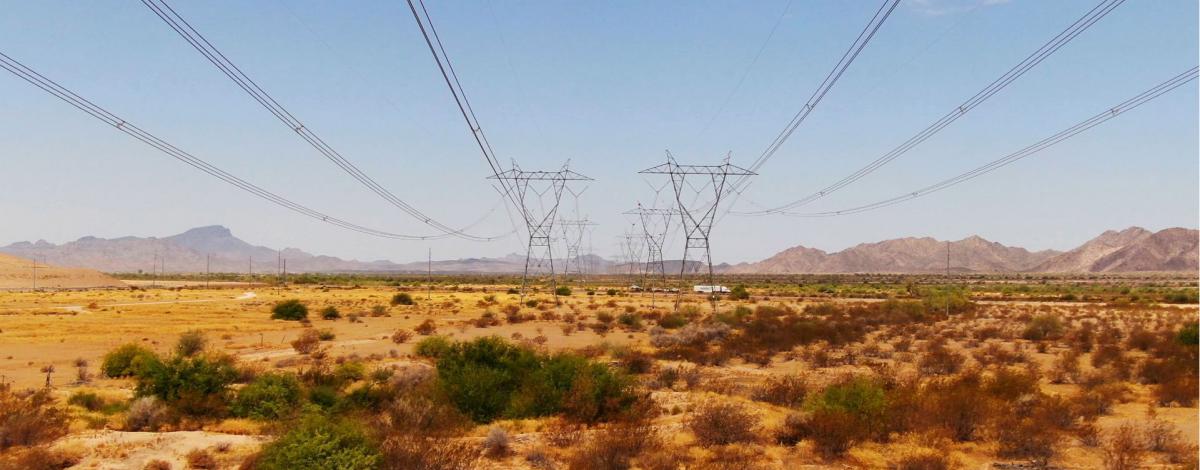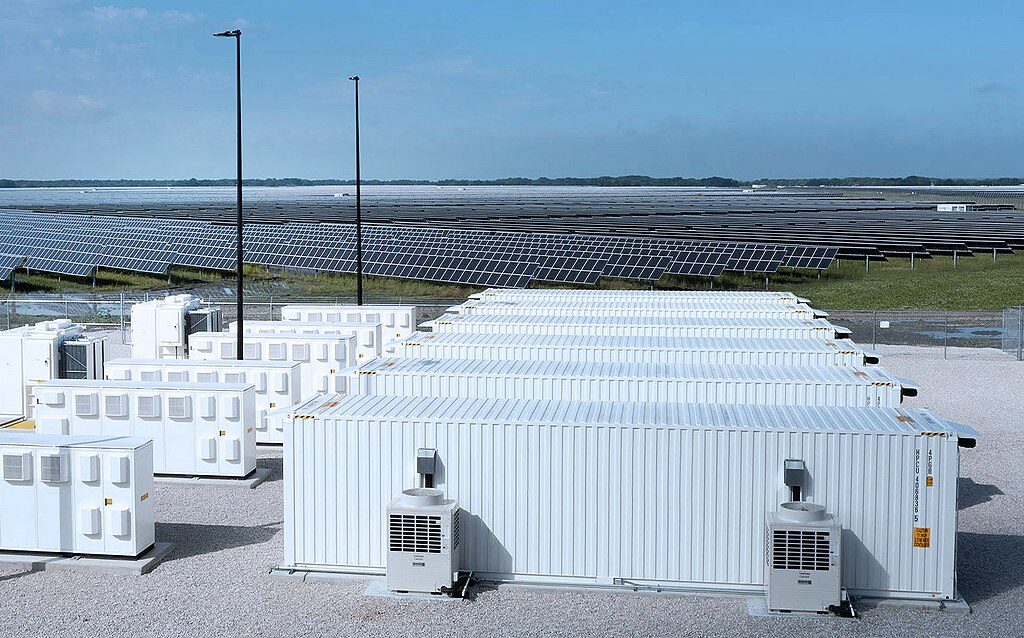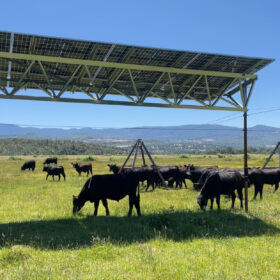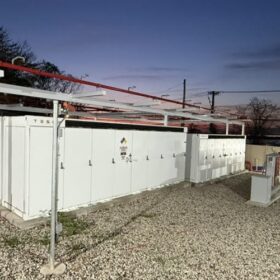A U.S. Department of Energy initiative to speed interconnection has drafted goals to reduce both interconnection costs and timelines by 50% in five years, and then transition to no more than one year “from application to build,” said Tom McDermott, chief engineer and solar lead at the Pacific Northwest National Laboratory, in a webinar.
Three national trade groups have said that interconnection studies for large-scale renewables and storage could be completed in “months instead of years.”
DOE’s i2X initiative, which 600 people from 400 organizations have joined, will refine its draft goal statement over the next couple of months, McDermott said.
The initiative is designed to enable partners to work together, said Michele Boyd, program manager at DOE’s Solar Energy Technology Office, on the webinar.
“Getting buy-in and adoption” is “very important,” McDermott said. “We can get things done perhaps by building consensus and illustrating better practices,” he said, but the stakeholders that DOE has been recruiting to join the initiative “are the ones that will have to adopt” new practices. Speaking to stakeholders on the webinar, he said “All we can do is encourage you and provide good examples.”
The initiative will operate through six working groups, and each participant is invited to join at least one working group, McDermott said. Ten staff members from DOE and the U.S. national laboratories, including Boyd and McDermott, are supporting the initiative.
The initiative will evaluate improvements to interconnection of both large-scale resources and distributed resources.
Timeline
Having engaged stakeholders, the initiative plans to release a five-year roadmap by mid-2023 that will “identify solutions that we have available today, as well as the data, research and technology gaps that need to be filled,” Boyd said.
The Federal Energy Regulatory Commission’s (FERC’s) final interconnection rule, which McDermott expects in the next few months, “will be the baseline” for the roadmap, he said.
Also in 2023, the i2X initiative will announce new technical assistance programs, Boyd said, to help individual organizations, or groups of organizations, “identify, test and implement solutions to their interconnection challenges.”
After 2023, pending Congressional appropriations, Boyd said DOE plans to collect interconnection data and conduct research to fill gaps identified by the roadmap, “to make it easier to solve” interconnection challenges. “To understand what success in interconnection means, we need to understand the status quo, set goals, and measure whether we are making progress,” she said.
The Solar and Storage Industries Institute earlier this year asked DOE’s Energy Information Administration to collect and publish interconnection data, but that request was denied as being burdensome.
With continued funding, the initiative will focus through 2028 on implementing and adopting better practices, McDermott said. By 2035, he envisioned that a “connect and manage” approach to speed interconnection could be used for at least 50% of new generating capacity. A similar approach is currently used in the ERCOT grid region in Texas.
The initiative has a “long view of success,” McDermott said.
Studies
To evaluate options for potentially improving interconnection processes and timelines, such as studying smaller clusters of interconnection applications within shorter timeframes, McDermott said the initiative will use a synthetic representation of the Texas grid.
Another planned study, he said, would evaluate prioritizing interconnection based on “successful experience in auctioning off wideband spectrum.” An auction could involve a capacity market, or an energy market, or both, he said. “It’s a little bit complicated; some people are positive on the idea,” he added. The study would simulate a market process to “see what kind of outcomes could change, and can that be a more efficient market-based approach to handling interconnections.”
Such studies, McDermott said, “could inform a future FERC notice of proposed rulemaking.”
Partners
DOE has recruited many types of stakeholders that play a “significant” role in interconnection, Boyd said: federal and state government agencies such as regulatory commissions, utilities, grid operators both on the distribution and transmission sides, consumer advocates, environmental and energy justice groups, research institutions, ratepayers and customers, businesses, and technology solution providers.
This content is protected by copyright and may not be reused. If you want to cooperate with us and would like to reuse some of our content, please contact: editors@pv-magazine.com.








The USA, and the World, needs a RIGHT TO CONNECT… Non-Polluting Solar & S2S.. Sunrise-to-Sunset … Energy Storage Facilities to the Grid… with NO WAITING TIME .. as every days delays leads to uneeded Death & Suffering that these Facilities prevent … like a waiting line at hospitals unable to attend to the patients.. asap…
What this means is Proactive Actions by the Grid Ownets/Operators & Regulators and not the ” Too Little-Too Late” Reactive Actions of Utilities & Regulators.. TODAY and in the past…
The US Economy is based on Timely Meeting of the Demand and not a Nation of Rationing, Shortages if Goods, Services & Facilities.. like Russia, China, India, etc.. etc..This NEED TO KEET THD DEMAND FORMS THE FOUNDATION OF THE FEDERAL RESERVE TODAY TOO.. SO WHY NOT THE GRID…
Meeting the Demand of the Pollution Free Suppliers of Energy/Electricity will, however, not be enough… as the Users of Polluting Fuels directly (Industry, Transportation, Agriculture, Commercial, Residential etc..) convert to Pollution Free Electricity & the Grid… and will have similar Demands as the Suppliers of Solar Energy…
The Biden Administration and Congress have, unfortunately, “failed to see the light” of a future based on Zero Pollution. TILL THE PEOPLE FORCE THE ABOVE CHANGE/FUTURE.. the lines/waiting times will just get … longer.. and longer… as they delay the Halt of the 200,000 Pre-MatureDeaths and Millions Suffering from the Effects of Pollution…
WHEN WILL THE PEOPLE WAKE UP AND FORCE THE CHANGE FOR A POLLUTION FREE USA (and maybe the World will follow too..)..